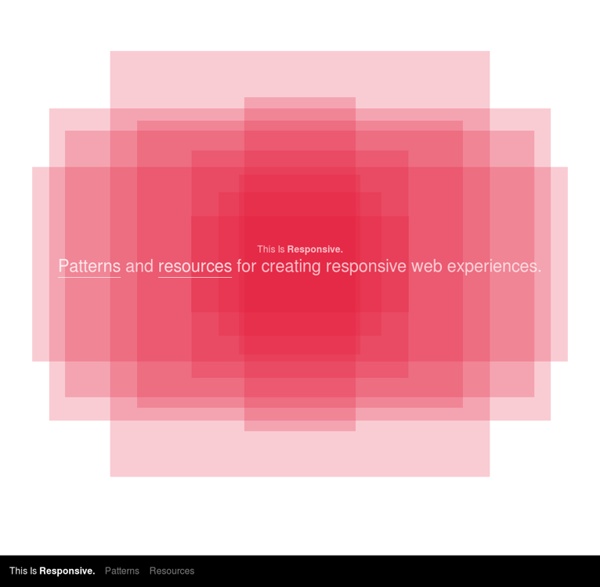



Web Design References: Flash Location: UMD → ITSS > Training > Online Training >Web Design References > Flash Web Design References Flash Site Map Web Design Site Map Inside Web Design References Newsletter Suggestions Suggest a Link Terms & Definitions Glossary About Back to Syndication Contact ITSS About ITSS Didn't find what you were looking for? Wireframes VS Prototypes etapes.com | Le magazine du design graphique css pour les perfectionnistes des approches typo du web - design Via le blog de nowhereelse vous pourrez tester vos choix typo pour votre webdesign ici. C'est juste que c'est un peu plus rapide que de le faire dans WordPress et d'être obligé de “mettre à jour” pour voir s'afficher vos nouveaux paramètres. Et nous savons tous que dans cette affaire ce qui compte, est la réactivité des programmes pour tester nos “hésitations” le plus rapidement possible. Biographie peter gabor né à Budapest • Études à Paris typo, design, socio et photo. • Graphiste & typographe freelance • Créateur de caractères • Consultant en identité d'entreprise • Conférencier • Enseignant la typo et le graphisme • Directeur d'e-artsup Un signe, une forme, des couleurs, du sens : «le style n'est pas une danse, c'est une démarche» (Jean Cocteau). Le signe et son organisation sont mon métier. Centres d'intérêt Hermann Zapf.
Flow 1st edition — by Patrick McNeil — Dec. 6, 2007 The Design Principle Well we made it to the final topic for this 6 part series and find ourselves on the principle of flow. Again, this rather obvious principle is an often overlooked or forgotten one. One thing to always remember when considering flow is the natural order of things. So selecting sites based on flow is a really tough challenge. Sample 1 - Rikcat Industries I have superimposed over this first sample site what I believe to be the visual flow of the site. Sample 2 - The Mark Boulton site presents a bit more complex solution to a similar situation, and yet it retains an easy to use model. This sites flow is not quite the "standard" approach, but it is still very effective. Sample 3 - Kineda The Kineda site presents a slightly more complex flow then the first two. Sample 4 - Golden Apple This final example has a much richer complex looking design then the first two examples, and yet it retains a very simple and clear flow. Conclusion